Sullivan University Honors Ghyslain Chocolatier Chef/Owner Ghyslain Maurais
Sunday, 03 June 2012 17:21
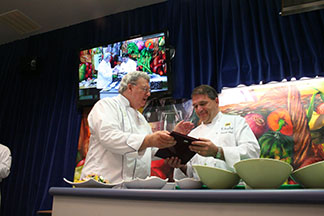 Sullivan University’s National Center for Hospitality Studies (NCHS) in Louisville, Ky., honored Ghyslain Maurais of Union City, Ind.-based Ghyslain Chocolatier with the prestigious Distinguished Visiting Chef award on May 17. As recipient of the award, Maurais presented on-campus cooking demonstrations in addition to a question-and-answer session held exclusively for Sullivan University students.
Sullivan University’s National Center for Hospitality Studies (NCHS) in Louisville, Ky., honored Ghyslain Maurais of Union City, Ind.-based Ghyslain Chocolatier with the prestigious Distinguished Visiting Chef award on May 17. As recipient of the award, Maurais presented on-campus cooking demonstrations in addition to a question-and-answer session held exclusively for Sullivan University students.
Designed to connect today’s aspiring culinarians with industry leaders, The Distinguished Visiting Chef Series has been recognizing three top chefs annually since its inception in 1988. Maurais is the 51st recipient of the award, joining an impressive roster of chefs that includes Bob Kinkead, Emeril Lagasse, Louis Osteen, Rick Tramonto and Marcel Desaulniers.

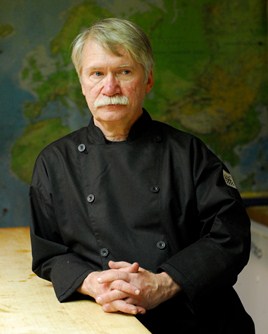 A career educator with 42 years in the food business divulges “musts” to achieve the critical successful relationship between culinary graduate and employer.
A career educator with 42 years in the food business divulges “musts” to achieve the critical successful relationship between culinary graduate and employer.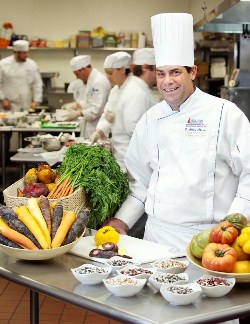 When is a food “heirloom,” and when is it “heritage”? And is buying “local” more or less beneficial to the planet than buying “organic”? Here’s a briefing on teaching the meaning of popular food buzzwords to students.
When is a food “heirloom,” and when is it “heritage”? And is buying “local” more or less beneficial to the planet than buying “organic”? Here’s a briefing on teaching the meaning of popular food buzzwords to students. New confections and snacks offer a reliable barometer of consumers’ evolving flavor demands and food choices, as revealed at the 2012 Sweets & Snacks Expo.
New confections and snacks offer a reliable barometer of consumers’ evolving flavor demands and food choices, as revealed at the 2012 Sweets & Snacks Expo. It’s barbecue season, after all. Here are 10 tips from an educator and registered dietitian to make dishes served at the time-honored American backyard celebration both delicious and more healthful.
It’s barbecue season, after all. Here are 10 tips from an educator and registered dietitian to make dishes served at the time-honored American backyard celebration both delicious and more healthful. As foodservice operators and food manufacturers aim to remove trans fats and reduce saturated fats from foods, functionality and taste will remain the top priorities. This means that ingredient companies must provide more than simple drop-in solutions to solve food-industry problems. Research, education and culinary support are essential for food companies to offer healthier products. To develop a new product or improve the nutrition profile of a customer’s favorite food, companies can now look to ingredient partners for culinary resources and expertise.
As foodservice operators and food manufacturers aim to remove trans fats and reduce saturated fats from foods, functionality and taste will remain the top priorities. This means that ingredient companies must provide more than simple drop-in solutions to solve food-industry problems. Research, education and culinary support are essential for food companies to offer healthier products. To develop a new product or improve the nutrition profile of a customer’s favorite food, companies can now look to ingredient partners for culinary resources and expertise.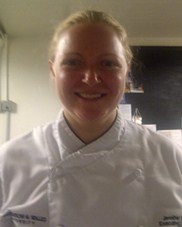 There are many different ways that healthier options can be made available to students in school cafeterias. It is up to culinary educators to take action and make these changes happen.
There are many different ways that healthier options can be made available to students in school cafeterias. It is up to culinary educators to take action and make these changes happen. Giuseppe Ricciardi took a big risk by opening a second operation next to the longstanding Fairfax favorite he’d owned since 1994. But that bet, like his other restaurant ventures, is paying off.
Giuseppe Ricciardi took a big risk by opening a second operation next to the longstanding Fairfax favorite he’d owned since 1994. But that bet, like his other restaurant ventures, is paying off. Continuing the theme of “connecting” from last month, this month Dr. Mayo asks us to consider the value of the four Ps.
Continuing the theme of “connecting” from last month, this month Dr. Mayo asks us to consider the value of the four Ps.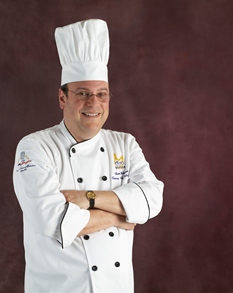 Here are the first five of 10 critical things you must teach your students if you truly want them to earn gainful employment.
Here are the first five of 10 critical things you must teach your students if you truly want them to earn gainful employment.